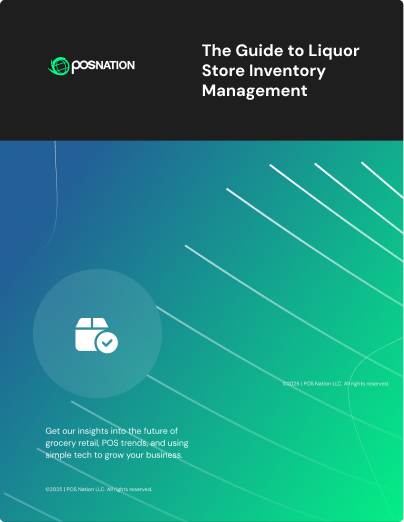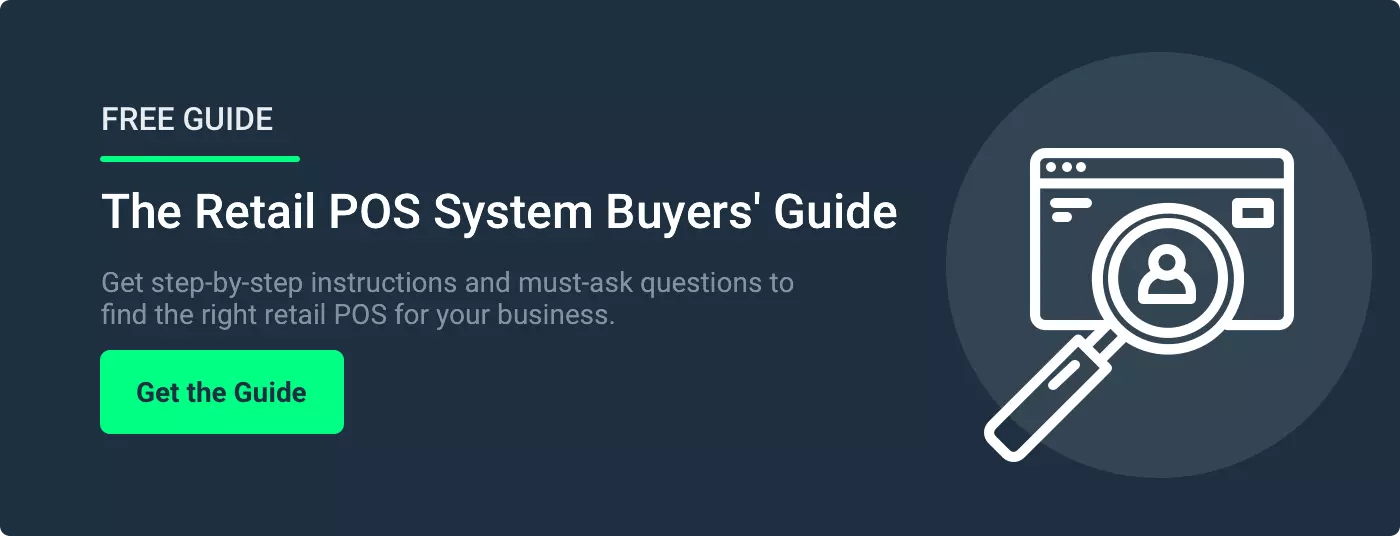Remember when it took nearly a minute to connect to the internet? Dial-up internet was the newest technology on the block in the 1990s — now, I bet you can’t even remember the last time you heard those tell-tale robotic tones.
Cash registers, excel spreadsheets for inventory management, and manual order fulfillment are going the same way — retail automation is the new kid on the block. And it’s not even that new. Technology is evolving at such a rapid pace, it’s hard to keep up.
But automated inventory, personalized customer experiences, and efficient warehouse management are just a few of the ways retail automation is guiding the retail industry toward efficiency and innovation.
In this article, we’ll explain what retail automation is, how it works, and, most importantly, how it can transform your business.
Answered: What Is Retail Automation?
Convenience is key — not just for customers — but for your employees and business. If you can find easier, more efficient ways to do things, you can spend more time dreaming up ways to improve your business.
Retail automation aims to automate repetitive tasks, improve efficiency, and create better shopping experiences for your customers. From self-checkout kiosks and digital signage to automated inventory management and data-driven marketing, automation harnesses technology to streamline operations and drive growth.
Do you have to automate everything? It can be tempting to want control over certain processes, but even if you’re the most meticulous person in your company, you’re still prone to human error. Retail automation is part of a fundamental shift in the retail industry. If you don’t want your store to be left behind, you must stay competitive and meet consumer demand.
Related Read: How To Attract Customers to Your Store
Retail automation is a tool you can use to grow your store and crush the competition. Let’s find out how.
How Does Retail Automation Work?
To get a little bit technical, retail automation uses artificial intelligence (AI), machine learning (ML), big data analytics, and the Internet of Things (IoT) to streamline and enhance your operations.
How?
Consider tasks that traditionally take a lot of time and effort — inventory management, for example. How long does it take to check inventory manually? And how likely are you to make an error? Automated inventory management does the same task quickly and error-free.
Where else do automated systems come into play? Self-checkout kiosks allow customers to scan and pay without waiting in line. AI-based recommendation software suggests products based on sales history and customer preferences.
Think of retail automation as a supercomputer that processes data, generates actionable insights, and automates repetitive tasks, freeing up you and your staff to focus on customer service and other elements that need a human touch.
Benefits For Small Retailers
How can retail automation transform your business?
#1. Optimized Inventory Management
Using ML, automated inventory software can predict demand based on historical sales data, seasonal trends, and upcoming promotions. With all the data your system collects, you can accurately forecast demand and ensure you have the right amount of stock at the right time.
What else?
- Barcode scanners enable real-time inventory tracking so you know what’s in your store or warehouse, and can update your inventory management system in real time as items are sold, returned, or moved.
- ML algorithms analyze sales data to identify patterns and trends. Which products are performing well? Which aren’t? You can also identify customer patterns, such as which products are often bought together, helping you create effective promotions and displays.
- Modern automated inventory systems not only alert you when products are running low but can be set to automatically reorder products when they reach a certain threshold.
Pro tip: POS systems can integrate with inventory management software to provide real-time updates as sales are made. Also, they generate sales reports, which help forecast demand. Some POS systems even have built-in inventory management features, such as low stock alerts and automated reordering.
#2. Personalized Customer Experiences
Far from automating back office functions, retail automation software can personalize customer experiences.
For example, you can manage loyalty programs, track customer purchases, and reward them for repeat business. Even better, you can personalize the loyalty program based on purchase history and offer relevant rewards to encourage further purchases. Automating this process ensures no purchase goes unrewarded.
What else?
- You can anticipate future sales trends. For example, if you learn that one of your customers frequently purchases dog food, you can recommend other pet-related products and create a personalized experience.
- To take the dog food example a step further, if your customer frequently purchases the same brand, you might offer discount vouchers every now and then. Personalized suggestions and promotions help customers feel valued.
Pro tip: Your POS system is valuable in personalizing the customer experience. Modern POS systems integrate with customer relationship management (CRM) software, which tracks purchase history and preferences. Along with integrated loyalty programs, you can offer product recommendations, create promotions, and provide stellar customer service.
#3. Efficient Order Fulfillment
Automated purchase order systems significantly speed up shipping times. When a customer places an order, it’s sent automatically to your warehouse, where your staff can pick, pack, and prepare the order for shipment. It takes minutes!
You can also streamline communication with suppliers by automatically generating and seeing purchase orders when inventory levels reach a certain threshold — no more running out of stock and panic ordering. Once the order is shipped, you can use automated tracking systems to monitor its progress and provide real-time updates to you and your customer.
What about returns? With return merchandise authorization (RMA) systems, you can automate the receiving, tracking, and processing of returned items, making returns faster and easier for you and your customers.
Pro tip: Most modern POS systems integrate with inventory management and order fulfillment systems, providing real-time updates as sales are made and orders are fulfilled. You will be able to keep track of your inventory levels at all times and process orders promptly as a result. Also, you can use POS systems to track returned items and issue refunds.
#4. Happier, More Productive Staff
Employees might fear that AI and ML could replace them, so explaining that the goal isn’t to replace staff but empower them is essential!
Automating repetitive tasks like order fulfillment or inventory management frees your staff to focus on more creative, high-value tasks. Imagine if your employees had more time to create stunning merchandising displays, develop new product lines, or strategize marketing campaigns. They might feel more excited about their work and part of your store’s success.
They’d also have more time to focus on customer service — answering questions, assisting customers, and providing a great shopping experience.
You can also use automation to manage employees. You can onboard employees, monitor their performance, and create and manage schedules, taking into account seasonal and peak business times and labor laws.
Pro tip: A modern point of sale system can track sales by employee, providing insight into individual performance. Accessing scheduling, time tracking, and payroll integration are also possible. Some POS systems even include tools for managing tasks and communication, making it easier to manage your staff.
#5. Cost Savings and Profit Boosting
There are various financial benefits to using automation:
- Less shrinkage: Quickly identify and rectify discrepancies by keeping track of inventory in real time. Less shrinkage means more profit.
- Reduced labor costs: Automation handles repetitive tasks faster than humans can — and with fewer errors. This doesn’t mean you should reduce your workforce, but you can channel their efforts into higher-value tasks where they can help produce more revenue.
- Optimized inventory management: By predicting demand and automating reordering, you can optimize inventory levels and avoid costs associated with overstocking and understocking.
- Improved customer experiences: Personalizing the customer experience can drive sales and improve customer loyalty. For example, personalized recommendations can increase average order value, while efficient order fulfillment can encourage repeat purchases.
Pro tip: You can optimize pricing, promotions, and inventory management using insights from your POS system. Additionally, your system can streamline sales and order fulfillment, reducing labor costs. Last, loyalty programs and personalized marketing can enhance the customer experience, increasing sales and profits.
Retail Automation: The Future Is Here
Retail automation isn’t a temporary trend — it’s here to stay and will develop. It will become more sophisticated and integral to retail operations. You must monitor trends and consumer demands to stay ahead of the curve.
And if you have a robust POS system, you can implement automation easily. It’s a critical tool that helps streamline operations, drives sales, and improves customer satisfaction.
At POS Nation, we provide retailers with an intuitive and feature-rich POS system. From robust inventory management to personalized marketing, we have the hardware and software you need to manage your store like a well-oiled machine.
Do you want to see how? Schedule a demo with our retail experts today!







 by Brian Sullivan
by Brian Sullivan

 by Cort Ouzts
by Cort Ouzts

 by Spence Hoffman
by Spence Hoffman